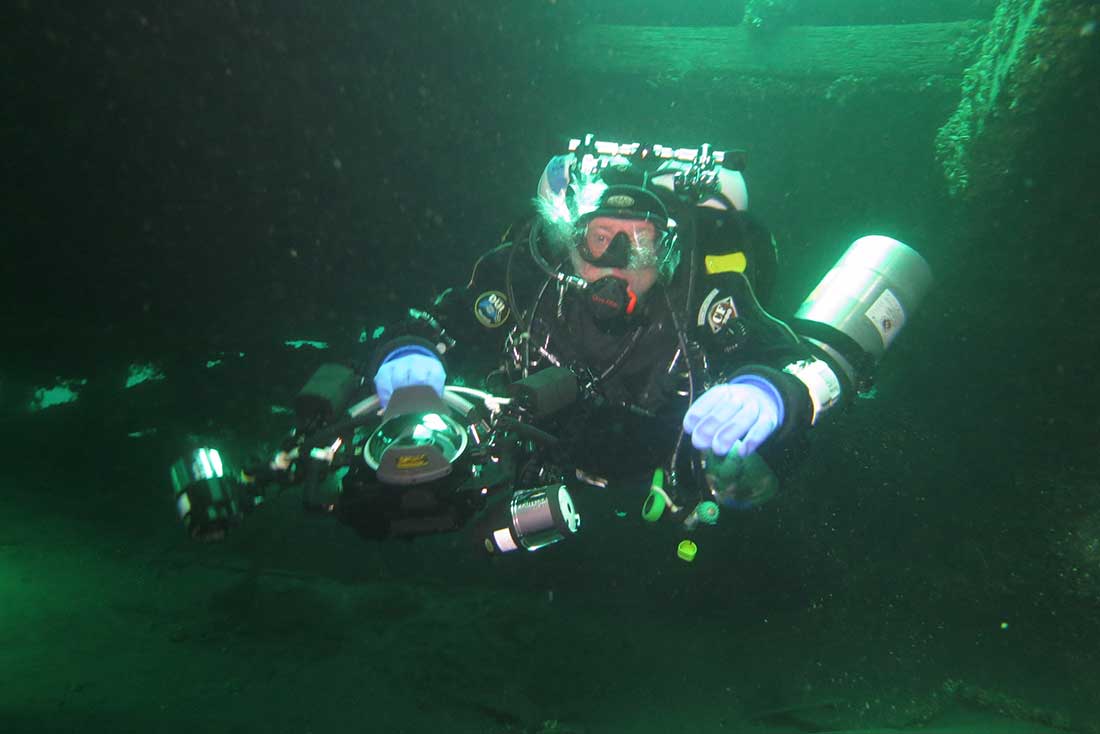By Jane Bodmer
You don’t have to travel to the Caribbean to find shipwrecks: Lake Michigan is full of them. In fact, one Evanston diver has made a career of teaching diving and exploring shipwrecks in the Great Lakes.
Myron Siciak, 59, is the owner of Elmer’s Watersports, an Evanston-based scuba shop. He teaches scuba classes and, in the summer, leads weekly dive trips in Lake Michigan.
“There isn’t a whole lot else in Lake Michigan,” Siciak said. “To look at it, [it] is kind of flat, a boring bottom with rocks and zebra mussels and an occasional trout or salmon. The shipwrecks are really the draw.”
Phil Kerber, president of the Great Lakes Shipwreck Preservation Society, has devoted his life to hunting, documenting and restoring shipwrecks in the Great Lakes. The vast majority of shipwrecks at the bottom of the lake mainly date from the 19th century and have been wrecked by storms.

“Back in the day, they didn’t have correct navigation systems or weather warnings,” Kerber said. “Give the Great Lakes two hours and the weather changes.”
After a shipwreck is discovered, the first step is to make a positive identification, after which the wreck must be documented and registered at the National Register of Historic Places.
Valerie van Heest, director of the Michigan Shipwreck Research Association, works closely with her team of divers on identifying and documenting newly uncovered wrecks.
For van Heest, identifying a wreck starts with going through old newspapers to look for a ship that never reached port. By looking at enrollment records from the time of the wreck, van Heest compares things like hull length and number of masts to match wrecks to records.
The condition of a wreck can indicate what kind of cargo a ship was carrying, allowing researchers to cross-reference with shipping records, van Heest said. For example, if a ship is especially damaged, it’s a good indication that it was carrying lumber, which is buoyant and will often break through the deck after a ship has gone down.
“It can be tough,” van Heest said. “Some might never be identified.”

Compounding the problem of identifying old ships are zebra mussels, a tiny invasive species carrying an acid that etches away the wooden name plates of old ships.
“If you look at a shipwreck in Lake Michigan,” Siciak said, “it typically looks fuzzy. It’s totally covered in an inch or so layer of zebra mussels, one right next to the other.”

According to Siciak, zebra mussels first came to the Great Lakes in the bilge water of a ship from the Caspian Sea. When the water was drained from the ship, spores were released into the Great Lakes, eventually growing into a heavy infestation of zebra mussels.
Keith Pamper, diving safety officer for the Shedd Aquarium, said zebra mussels are concerning from an ecological standpoint.
“The mussels are not good for the environment,” Pamper said. “They out-compete other animals. They cover just about every surface they can, which makes it unavailable for other animals to populate. Unfortunately, nothing seems to want to eat them. There seems to be no way to really stop them.”
Despite the acidic erosion to wood, van Heest credits zebra mussels with helping to preserve shipwrecks, as improved water clarity corresponded to improved underwater photography equipment.
“Affordable underwater equipment and water clarity” combined to reduce people’s desire to take things from wrecks, van Heest said.
“Anytime people visit a wreck, there’s the potential for something to get broken, to get taken,” van Heest said. “A lot of ships were really destroyed from people taking things when diving first got popular.”

Van Heest said she has always believed history is important and that shipwrecks provide the perfect medium for drawing in the public.
“What we find with shipwrecks is they’re mysterious,” van Heest said. “They’re unusual, so if we can hook people in, we can provide an education.”
This is exactly what Siciak is doing at his shop. He said he enjoys teaching and that his favorite part is watching people’s reactions to seeing incredible things underwater.
“It’s a portal into a world that the rest of us can’t see that really gets affected by things we do on land,” Siciak said. “Pollution will first affect bodies of water before it affects land, and we get to see that and, hopefully, make some changes so that it doesn’t continue happening.”

